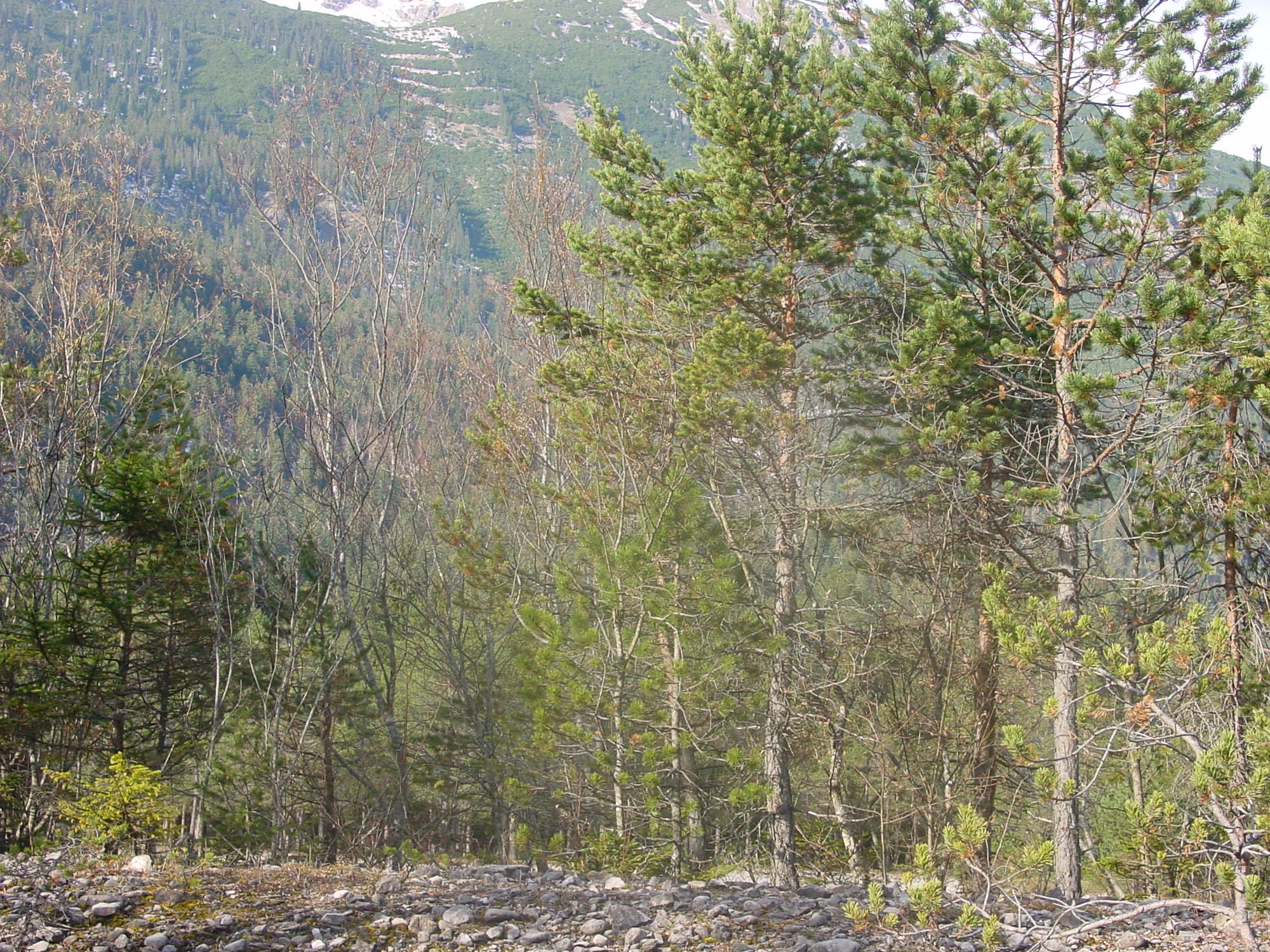
The Spirke (Pinus uncinata) is often referred to as an upright growing mountain pine. Mountain pine (Pinus mugo) and spirke cannot be clearly distinguished from each other. Thus the spirke is not always described as a separate species, but usually as a subspecies (Pinus mugo uncinata) of the mountain pine.
The spiraea is a medium-sized tree and colonises the same habitats as the much more common Pine (Pinus sylvestris). The dark-coloured trunk makes it easy to distinguish from the red-stemmed pine. It can tolerate debris overgrowth of the trunk very well and therefore colonises sites with extreme conditions (nutrient poverty, water poverty, extreme dryness, high light availability, etc.), such as rubble heaps and rocky outcrops, as a species with low competition.
In the Lechtal Alps, the Spirken are a special treasure. The valuable Spirken forests, which are unrivalled on scree and rocky sites and also unique in their aesthetic appearance, are the most common and richest of all remaining Austrian occurrences here (SCHIECHTL et al. 1993).
In Austria, only Tyrol and Vorarlberg are home to spruce forests. In North Tyrol, spruce forests are a rarity, which are characterised by a special species richness and fulfil a high protective function, as they consolidate unstable scree slopes and prepare the soil for future forest communities. Spiral forests on gypsiferous and calcareous soil enjoy special protection status throughout Europe and are part of the international Natura 2000 network.